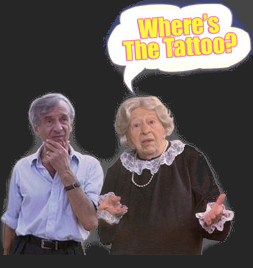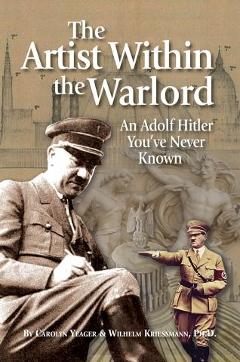Giesler on Speer: The Battle of the Architects
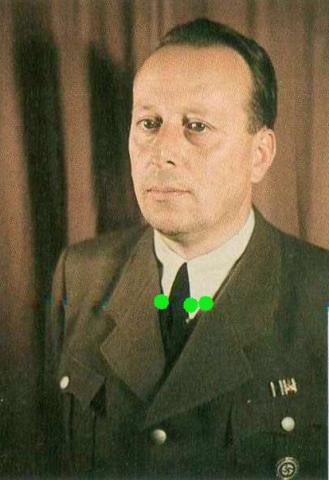
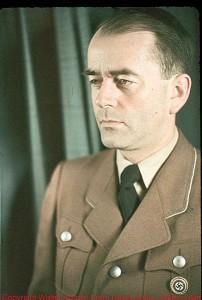
Hermann Giesler on left; Albert Speer on right, both in their NSDAP uniform and wearing the Golden Party Badge.
In his memoir about the Adolf Hitler he knew (Ein Anderer Hitler), Hermann Giesler devoted a section to his difficult relationship with architect Albert Speer. Divided into six parts, it covers 42 pages, from pg. 318 to 360. Wilhelm Kriessmann translated the entire section in 201l, but we decided not to include it as part of our series from Ein Anderer Hitler, but to publish it separately. However, Willis Carto never decided to buy the right to publish it in The Barnes Review, as he did the others, even after we condensed only selected parts of it.
Thus it is that now, several years later, I am finally getting back to this project and putting what I consider the most relevant parts of Giesler's commentary on Speer into shape for publication on my website. I will first post these parts separately in the blog, and then archive them under Ein Anderer Hitler on the sidebar.
I begin, not at the beginning, but with Giesler's third entry which was titled “The Flight to Posen.” I think it's a good introduction to the character of Albert Speer, the relationship between the two men, and how Speer was generally viewed amongst some of the others of the inner circle around the Führer. Not without respect, of course, because it was plain to everyone that the Führer valued him highly. But the thread running throughout Giesler's writing on the subject of Speer is to make known the hypocrisy, to the point of duplicitousness, contained in Speer's descriptions of Hitler during the IMT “trials” at Nuremberg and in his later memoir Erinnerungen [Reminiscences] published in 1969 [1970 English language version titled Inside the Third Reich]. The same was true in Speer's second book, Spandauer Tagebuecher [Spandau Diaries] (published in English in 1976 as Spandau: The Secret Diaries. -Carolyn Yeager

Adolf Hitler's personal Fw 200 Condor, bearing the insignia of the Fliegerstaffel des Führers on its nose.
The Flight to Posen
Taken from Hermann Giesler's memoir Ein Anderer Hitler
Translated by Wilhelm Kriessmann and Carolyn Yeager
copyright Carolyn Yeager 2014
“I just caused Doenitz's anger when I told him during the walk in the garden about Hitler's trip to Posen towards the end of 1939, with a 4-engine airplane, to pick up Christmas geese. Bauer, Hitler's pilot, argued the rarely used aircraft needed some practice flights. The geese were for parcels Hitler sent at Christmas to friends and acquaintances. This was for Doenitz a rather strange mix of middle class and potentate, however incorrect it was. He was upset and finally found a way to not believe my story.” -Speer
The Grand Admiral was right and reacted properly. If Speer uses the flight to Posen with a four-engine aircraft as an example of Adolf Hitler's middle-class benevolence1 combined with a monarchical sense of privilege, then I feel responsible to describe the flight to Posen truthfully, as it really happened.
On the evening before the flight we talked at the Reichs Chancellery about city building and architecture. At the end, Adolf Hitler spoke about theater buildings, architects and regents like Wilhelm II who supported the construction of the theater in Posen. “The condition of Posen and its theater would interest me very much,” said Hitler to Speer and me. “Captain Bauer can fly both of you to Posen. In the evening I'd like to receive your report.”
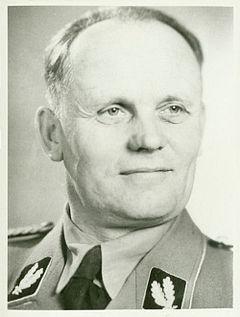
Next morning, it was captain Bauer (pictured right), his co-pilot Beetz, an army adjutant, Speer, myself and, as an additional flight guest, also Kannenberg, the household manager of the chancellery. At once 'suspicion' and also the question arose: Maybe Mr. Kannenberg wants to do some hoard-shopping? A gentle smile was the only answer. I had met the rotund Kannenberg on many occasions. He had the well-cushioned face of a gourmand, with quick button eyes, apparently good-natured like most of the well-nourished.
We relaxed in the Fuehrer cabin. I did not pay any attention to what Speer discussed with Bauer before we took off. We flew very high with clear visibility. Speer got up, nonchalantly said, “Now I will take over the steering and do the piloting,” and disappeared into the cockpit. Bauer appeared in the cabin, “The Speer wants to fly, well, he can show us now what he is able to do!”
He showed it—or better the copilot showed his art and how the aircraft reacted. Up till now Kannenberg had only raised his eyebrows and looked timidly with his button eyes to the captain. Now he started to yell because the airplane turned, first rocking, then diving with a full throttle. Kannenberg was lifted out of his seat, floating, his arms and legs helplessly swinging as if they were not his. Coming out of the dive, the aircraft pulled up to a sudden half looping, then swept down over the wing. Kannenberg fell to the floor and moaned. Bauer was holding on to the handles. “The Speer can't ...” I heard him say as he returned hand over hand to the cockpit.
I kept my legs anchored under the seat, holding with my hands the belt which I could no longer fasten. I knew now what was happening and the grotesque quality of it forced me to laugh, but that was gone fast. I clenched my teeth so that my stomach would not … well, now Kannenberg was sliding towards me at an angled position, then he was flying into the other direction … what a tangle!
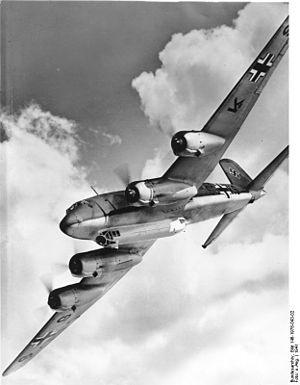
Finally the airplane straightened out and the adjutant and I took care of Kannenberg. We straightened him up and fastened his belts. He was pale with blue lips. Then Speer appeared with a grin like Ruehmann's teenager Pfeiffer (from a movie Quax der Bruchpilot). I pointed toward Kannenberg and the grin disappeared. It was lucky we landed soon in Posen. Kannenberg gasped as they put him on a stretcher and wrapped him in blankets, a doctor taking care of him.
If Kannenberg flew with us in order to hoard or look out for Christmas geese and adequate connections—that ís possible, but that's all—then everything remains of the accident in the cabin because he was now completely done in. But I cannot imagine that, as Speer writes, geese should have been transported in the Führer's airplane. Curious eyes were all around, there was already enough attention just because of the aircraft, besides Kannenberg laying on the stretcher. One needed only to add the remark: Look, the Führer's aircraft is being loaded with geese!
Speer and I drove from the airport to town to pursue our task to find out what is going on in Posen, and to have a proper visit of the theatre. We spent almost 5 hours. Well! - then the Christmas geese could have been loaded in the meantime into the freight compartments of the aircraft ?
I wrote to captain Bauer: “You must know very well if the airplane piloted by you transported geese.” He answered right away: “Naturally I remember that flight when I flew both of you to Posen and what happened to Kannenberg, who was then out of circulation. However, to pick up some geese for the Führer, that is an invention of Speer. That Kannenberg might have intended to look for geese was his own business, but I am not even sure about that. I do not know anything about it. The Führer had no interest at all, as we know. This is once more a machination typical of Speer in order to smear the Führer and us.” Only that far will I quote captain Bauer's letter about the flight to Posen.
In the late evening, I reported my impression of Posen and the run-down theater. Adolf Hitler said to me, “Now tell me how the flight was. I am informed but I wanted to listen to you too. Mrs. Kannenberg told me her husband is in bad shape. Now, what happened?”
I did tell the story my way and noticed that he could not hide a slight smile. As I then described the part of Kannenberg on the stretcher covered in blankets and taken care by a doctor, Adolf Hitler turned serious. He said, “The fun could have ended badly. I have to admonish you seriously, I owe it to Mrs. Kannenberg, she runs my household. I ask you to consider that in the future.”
Finally, it should be said here for good: There has been no “other flight to Posen” by Hitler's 4-engine aircraft.
Speer had often a Heidelberger joke and prank in mind! It started with a “special good Havana” he offered which exploded when you began smoking. He continued by “sending you into April” then by giving “friendly hints.” All that might still have been acceptable, but often it ended with bad insinuations, bordering on maliciousness.
The geese-transport of Posen with the 4-motor Fuehrer aircraft was a case irritating the Grossadmiral's mind. It is part of Speer's “richness of thoughts and sincerity,” in keeping with Zuckmeyer's2 breathtaking remark: Concerning Speer personally, he is of an arrogant sensitivity.
End Notes:
1. This is considered a put-down by Speer, whenever he referred to Hitler or Giesler as "bourgeois."
2. Carl Zuckmeyer, a German-Jewish playwright. His plays were prohibited in Germany after 1933 (Zuckmayer's maternal grandfather had been born Jewish and converted to Protestantism). Zuckmayer and his family moved to their house in Austria, where he published a few more works. After the Anschluss he was expatriated by the government, and the Zuckmayers moved to the United States in 1939, where he first worked as a script writer in Hollywood. In 1943/44 he wrote "character portraits" of actors, writers and other artists in Germany for the Office of Strategic Services (OSS), evaluating their involvement with the Nazi regime. This became known only in 2002, when the approximately 150 reports were published in Germany under the title Geheimreport.
Tags
architectsCategory
Adolf Hitler, Germany, National Socialism- Printer-friendly version
- 18738 reads






